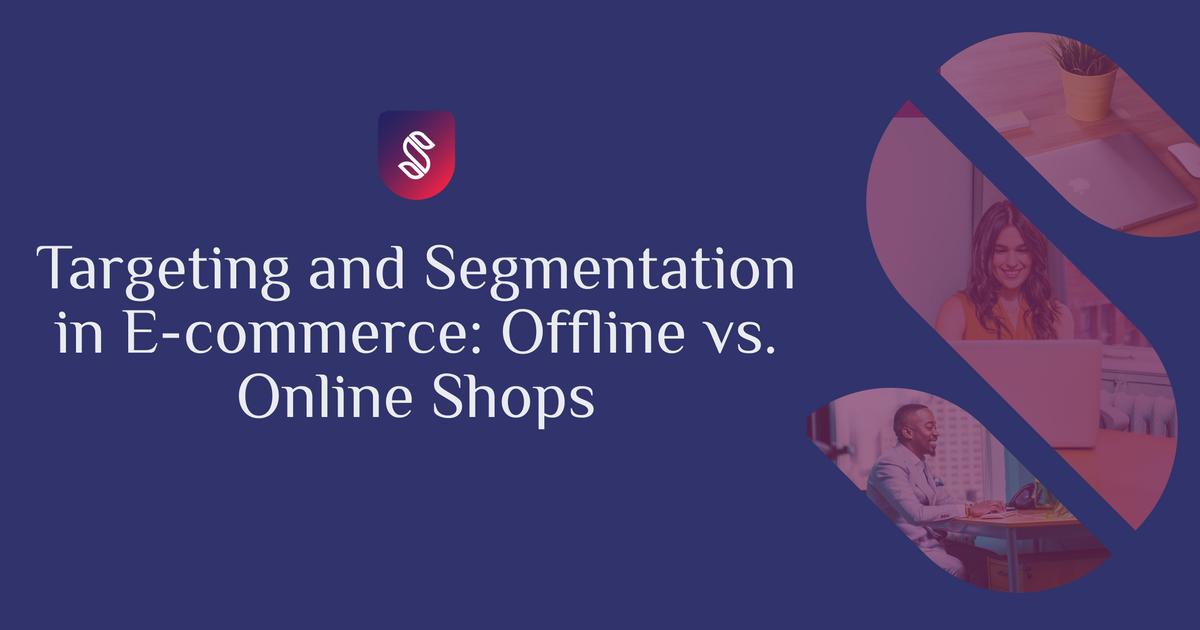Written on 2nd July, 2020 | 3 min read
Targeting and Segmentation in E-commerce: Offline vs. Online Shops
To attract your ideal customers, don’t start with demographics
Andreea Macoveiciuc
Strategist @School of Content

Creating customer segments based on demographics is ok for offline, local businesses, but not for online ones. When shopping offline, your choices are limited and convenience means the closest shop that is available (open) and has the products that you need in stock.
On the other hand, when shopping online, convenience means any website that’s one click away and has the products that you’re looking for.
This is the end-user perspective. Now let’s put ourselves in the shoes of a webshop owner. Segmenting your customer base using demographic data such as their gender, age and income should never be the first criteria you use.
Even when your product is targeting a single segment, like 50+ adults, for example, you should still leave the demographics for narrowing down your segments, once the first grouping is done.
For online shops, segmentation should start from behavior patterns: purchasing habits, interactions with brands and products, days between transactions, retention rate.
These may be harder to identify when your customer base is smaller, but if you have 1000+ customers and they’re not converting well enough, that’s a sign of poor segmentation and targeting.
Online shops: start with RFM segmentation and narrow down with demographics
I won’t explain the basics of RFM here. There’s a lot of educational material out there, so if the concept is new to you, take some minutes to read about it first.
Now, segmenting your customer base using the RFM model has the advantage of quickly highlighting:
your ideal customer profile
the products and brands they prefer
the products and brands they complain about
the frequency of their orders
their preferred payment and delivery methods
At the same time, RFM segmentation makes it easy for you to spot the differences between the customers who come back and those who leave you after placing the first order.
I’ll give you an example:
Image: omniconvert-rfm-model
For this particular shop, starting with RFM segmentation immediately shows that the most valuable customers, although less numerous than the other segments, are bringing in the most revenue.
If we dive deeper into the specifics of this segment and apply now the demographic grouping, we will end up with well-defined groups of ideal customers.
For example, the ideal customer segment might include:
Women between 30–45 years old, from urban areas, married, who spend on average $350/order. They buy mostly office clothes and sandals, and filter based on size and material.
Their top accessed categories also include male pajamas and kids’ sports clothes. They open the reviews accordions before placing an order and return less than 20% of the products ordered. They buy both online and in-store.
On the other hand, the most numerous segment is:
Women between 18–25 years old from urban areas, not married, who buy mostly flats, tops, and dresses. They filter based on size and color and spend on average $80 per order. They return almost half of the ordered products. They buy mostly online.
If we would start the segmentation with demographic data, we would create our marketing campaigns around women in the 18–25 years old group.
We would acquire a lot of new customers who would place a lot of orders. But the AOV of these customers and the return rates would mean losses in the long run for the shop.
Offline segmentation: start with demographics and narrow down with RFM
I don’t have graphics to show for an offline store, but I’ll use an example similar to the one above.
Let’s say this same shop has offline locations in a city of middle size. The shop is located in a central area but looks a bit outdated. The products displayed in the windows are a bit old fashion.
With online shops, people click the link before seeing all the products, so an attractive product ad can get the attention of both the ideal and the non-profitable customers.
On the other hand, with an offline shop, it’s very unlikely that someone would enter it if the products displayed are not what they’re looking for. So demographic segmentation, in this case, is the first criterion to apply when preparing any sort of campaign.
Who enters the store? What’s their age, marital status, income? Are these the people that you want to attract? Are your products a good fit for this segment? Are they from the area? Do they come by regularly?
How many products do they usually buy? How much do they spend? Do they return products? Why?
If the only customers entering this store are men above 50 years old, but your offer for them is very limited, you won’t sell much. On the other hand, if you adjust your assortment based on this segment, and then refine your offering based on RFM patterns, your chances of selling more increase.
I hope this gives you a bit of direction when doing e-commerce segmentation, and helps you focus your efforts on the right customer profile.